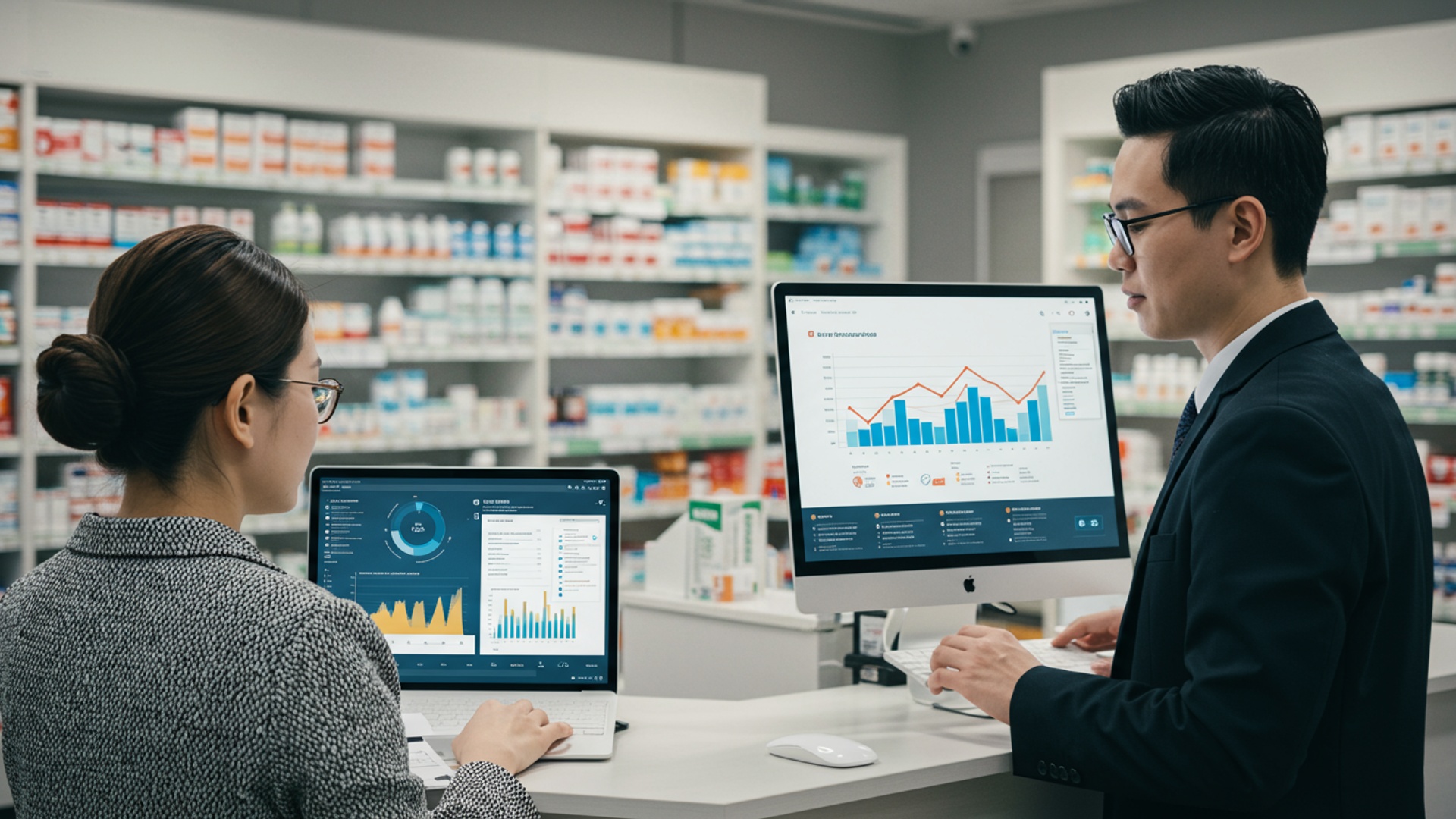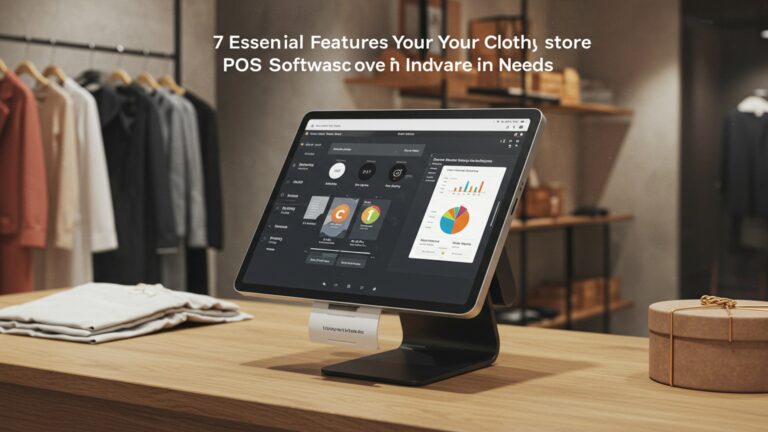Discover 8 Key Benefits Of Pharmacy Management Software For Growth
The modern pharmacy navigates an increasingly complex operational landscape, grappling with escalating prescription volumes, intricate insurance reimbursements. the imperative for enhanced patient engagement amidst evolving regulatory demands. Efficiently managing these multifaceted challenges is paramount for sustained viability and competitive growth. Strategic adoption of advanced pharmacy management software directly addresses these pressures, transforming manual, time-consuming tasks into streamlined, automated workflows. This digital transformation extends beyond dispensing and inventory control, enabling robust data analytics for informed decision-making and empowering pharmacists to dedicate more time to value-added clinical services, driving both operational excellence and superior patient outcomes.

Enhanced Efficiency and Workflow Automation
In the demanding environment of modern pharmacy operations, manual processes can be a significant bottleneck, consuming valuable time and increasing the potential for human error. This is where the power of pharmacy management software truly shines. By automating a multitude of daily tasks, it allows pharmacists and their teams to shift their focus from administrative burdens to patient care.
Consider the process of prescription fulfillment. Traditionally, this involves numerous steps: receiving the prescription, checking patient history, verifying insurance, counting medication, labeling. counseling. Each step, when done manually, is prone to delays and errors. A comprehensive pharmacy management software system integrates these steps into a seamless workflow. For instance, upon receiving an e-prescription, the software can automatically cross-reference it with the patient’s profile, flag potential drug interactions or allergies, verify insurance eligibility. even initiate the billing process. This automation significantly reduces the time spent on each prescription, thereby increasing the volume of prescriptions a pharmacy can handle without compromising accuracy.
Key Automation Features:
- Automated Prescription Processing and Dispensing
- Workflow Management for Task Assignment and Tracking
- Real-time Updates for Inventory and Patient Records
- Automated Reminder Systems for Refills and Appointments
Anecdotal evidence from pharmacies transitioning from paper-based or rudimentary systems consistently points to a dramatic increase in operational efficiency. Pharmacists report feeling less overwhelmed by paperwork and more engaged with their patients, leading to a more positive work environment and improved service delivery.
Improved Inventory Management
Effective inventory management is the backbone of a profitable pharmacy. Overstocking ties up capital and risks expiration, while understocking leads to lost sales and patient dissatisfaction. A sophisticated pharmacy management software system provides precise control and visibility over your entire inventory, transforming a complex challenge into a manageable, data-driven process.
The software tracks every medication from the moment it enters the pharmacy until it’s dispensed, providing real-time data on stock levels. It can automatically generate purchase orders when stock falls below predefined thresholds, taking into account historical sales data, seasonal demand. supplier lead times. This predictive capability minimizes the risk of stockouts for essential medications and reduces waste from expired products.
Comparison: Manual vs. Automated Inventory
| Feature | Manual Inventory Management | Pharmacy Management Software |
|---|---|---|
| Stock Tracking | Time-consuming physical counts, prone to errors, often outdated. | Real-time, accurate digital tracking, automated updates upon dispensing/receiving. |
| Ordering | Guesswork, manual reconciliation, potential for over/under-ordering. | Automated reorder points, demand forecasting, direct supplier integration. |
| Expiration Management | Manual checks, high risk of dispensing expired drugs or incurring losses. | Automated alerts for expiring stock, facilitating timely returns or transfers. |
| Loss Prevention | Difficult to track discrepancies, higher shrinkage. | Detailed audit trails, tracking of every item, reducing theft/loss. |
A recent industry report by the National Association of Chain Drug Stores (NACDS) highlighted that pharmacies leveraging advanced inventory systems can reduce carrying costs by up to 15-20% while simultaneously improving medication availability. This directly translates to increased profitability and better patient service.
Better Patient Safety and Adherence
Patient safety is paramount in healthcare. medication errors are a serious concern. Pharmacy management software plays a critical role in mitigating these risks and promoting better patient adherence to prescribed therapies.
The software acts as a multi-layered safety net. When a prescription is entered, it instantly cross-references the medication against the patient’s existing drug profile, allergies. even other medications from different prescribers, flagging potential drug-drug interactions, contraindications, or duplicate therapies. For example, if a patient is prescribed a medication that interacts negatively with another drug they are already taking, the system will issue an immediate alert, allowing the pharmacist to intervene and consult with the prescriber. This proactive approach significantly reduces the likelihood of adverse drug events.
Moreover, the software can generate automated refill reminders, medication adherence reports. even synchronize multiple prescriptions for a patient to be picked up on the same day (medication synchronization). These features help patients stay on track with their treatment plans, improving health outcomes and reducing hospital readmissions. According to the World Health Organization (WHO), poor medication adherence is a major concern globally. technological interventions like PAMS are crucial in addressing it.
Optimized Billing and Revenue Cycle Management
Navigating the complexities of insurance claims, reimbursements. patient billing can be a daunting and time-consuming task for any pharmacy. An integrated pharmacy management software streamlines the entire revenue cycle, leading to faster payments, fewer denied claims. improved financial health.
The software automates the submission of claims to various insurance providers, ensuring that all necessary insights is accurate and complete before submission. It can verify patient eligibility in real-time, identify potential issues that could lead to claim rejections. even manage prior authorizations. When claims are denied, the system often provides detailed explanations, enabling pharmacies to quickly rectify and resubmit, significantly reducing the turnaround time for reimbursement.
Real-world Application: Consider a scenario where a pharmacy manually submits claims. A single incorrect code or missing piece of insights could lead to a denial, requiring manual follow-up, resubmission. a delay of weeks or even months in payment. With robust pharmacy management software, such errors are caught proactively. the electronic submission process drastically accelerates reimbursement cycles. This improved cash flow is vital for a pharmacy’s sustained growth and ability to invest in better services or expand its offerings.
Robust Data Analytics and Reporting
In today’s data-driven world, intelligent decision-making hinges on access to accurate and comprehensive data. Pharmacy management software is not just a transactional system; it’s a powerful analytical tool that collects vast amounts of data, transforming it into actionable insights.
The software can generate a wide array of reports on everything from sales trends and prescription volume to inventory turnover rates, staff performance. patient demographics. For example, a pharmacy owner might use a sales report to identify peak dispensing times, allowing them to optimize staffing levels. Or they might examine prescription data to grasp which therapeutic areas are growing, informing decisions about specialty medication stocking or new service offerings like chronic disease management programs.
Key Data Insights Provided:
- Sales and Profitability Analysis by product, therapeutic class, or prescriber.
- Inventory Performance Metrics (e. g. , turnover rate, days of supply).
- Patient Adherence and Outcome Tracking.
- Operational Efficiency Metrics (e. g. , dispensing time per prescription).
- Financial Reports (e. g. , accounts receivable, claim rejection rates).
This level of detailed reporting empowers pharmacy managers to identify areas for improvement, capitalize on new opportunities. make strategic decisions based on factual data rather than intuition. It allows for continuous optimization across all facets of the business.
Enhanced Patient Engagement and Communication
Building strong relationships with patients is crucial for loyalty and the long-term success of any pharmacy. Modern pharmacy management software extends beyond dispensing to facilitate more proactive and personalized patient engagement and communication.
The software can manage various patient communication channels, including automated text messages or email reminders for prescription refills, annual flu shots, or medication therapy management appointments. It can also securely store patient communication preferences and interaction history, enabling pharmacists to deliver tailored advice and support. For example, if a patient is due for a specific vaccination, the system can automatically send a reminder, increasing the likelihood of them receiving timely preventative care.
Moreover, many systems offer patient portals, allowing individuals to securely access their medication history, request refills. communicate directly with the pharmacy. This level of accessibility and personalized interaction not only improves patient satisfaction but also fosters a sense of partnership in their healthcare journey. Pharmacies that actively engage their patients through these channels often report higher retention rates and a stronger community presence.
Regulatory Compliance and Security
The pharmacy industry is heavily regulated, with strict requirements concerning patient data privacy (e. g. , HIPAA in the U. S.) , medication tracking. controlled substance reporting. Non-compliance can lead to severe penalties, including hefty fines and loss of license. A robust pharmacy management software is an indispensable tool for ensuring adherence to these complex regulations.
The software is designed with built-in features that help pharmacies meet compliance standards. It maintains detailed audit trails of every transaction, access log. change made to patient records, essential for demonstrating compliance during inspections. For controlled substances, the software automates reporting to state Prescription Drug Monitoring Programs (PDMPs), reducing the manual burden and ensuring accuracy. It also provides secure access controls, encrypts patient data. includes features for secure data backup and recovery, safeguarding sensitive patient data against breaches.
Key Compliance Features:
- HIPAA-compliant data encryption and access controls.
- Automated reporting for controlled substances (e. g. , PDMP integration).
- Comprehensive audit trails for all system activities.
- Secure data backup and disaster recovery protocols.
- Compliance with drug serialization and tracking mandates (e. g. , DSCSA).
By automating compliance processes and providing a secure environment for data, pharmacy management software allows pharmacists to focus on patient care with peace of mind, knowing their operations meet the highest legal and ethical standards.
Scalability and Business Growth
As a pharmacy grows, its operational complexities multiply. What works for a small, independent pharmacy may not suffice for a multi-location chain or a pharmacy expanding its services. One of the most significant advantages of modern pharmacy management software is its inherent scalability, designed to support and facilitate business growth.
Whether you’re opening a new branch, acquiring another pharmacy, or introducing new services like compounding, immunizations, or medication therapy management (MTM), the software can adapt to these changes. It can easily integrate new patient data, inventory from multiple locations. new billing codes for expanded services. Centralized systems allow for consistent operations and data management across all locations, providing a unified view of the entire business.
Moreover, many advanced pharmacy management software solutions offer modular architectures, allowing pharmacies to add new functionalities as needed, such as point-of-sale (POS) integration, e-commerce platforms, or advanced clinical modules. This flexibility means that the software grows with the business, eliminating the need for costly and disruptive system replacements down the line. Investing in a scalable solution from the outset is a strategic move that supports long-term expansion and innovation, enabling pharmacies to seize new opportunities and remain competitive in an evolving healthcare landscape.
Written by PromotoAI
promotoai generate content that ranks
Conclusion
Implementing robust pharmacy management software isn’t merely an upgrade; it’s a strategic imperative for sustainable growth in today’s dynamic healthcare landscape. Having witnessed numerous pharmacies transform their operations, I can attest that the shift from fragmented, manual processes to an integrated system – meticulously handling everything from prescription dispensing to detailed patient records – significantly boosts both operational efficiency and overall patient satisfaction. For instance, imagine the time saved by instantly processing insurance claims, a frequent administrative bottleneck, or providing immediate access to a patient’s comprehensive medication history during a consultation, especially with the recent push for integrated digital health records. My personal tip: don’t just seek out a long list of features. prioritize a system that offers seamless integration with emerging trends like telehealth platforms and provides actionable analytics for predictive inventory optimization. The market is evolving rapidly, with advanced solutions now offering insights into demand trends, a true game-changer for minimizing waste and ensuring critical stock availability. Take this crucial step; evaluate your current needs, identify areas for improvement. invest wisely in a future where your pharmacy doesn’t just survive. truly thrives, empowering you to dedicate more time to personalized patient care and less to laborious administrative tasks. Your pharmacy’s journey towards enhanced growth and unparalleled service excellence begins now.
More Articles
Optimize Your Pharmacy 8 Ways POS Software Boosts Patient Care and Profit
7 Essential Strategies to Master Pharmacy Inventory Management Software
Unlock 7 Powerful Benefits From Pharmacy Management Software Solutions
7 Smart Strategies to Optimize Pharmacy Inventory with Management Software
Written by PromotoAI
promotoai generate content that ranks
FAQs
What’s the main idea behind using pharmacy management software for growth?
It’s all about streamlining your operations, reducing errors. freeing up your team to focus more on patient care and strategic growth initiatives. Essentially, it makes your pharmacy run smoother, smarter. more profitable.
How does this software make daily tasks easier for my pharmacy staff?
It automates many repetitive tasks like prescription processing, inventory updates. billing. This means less manual work, fewer errors. more time for your staff to engage with patients or handle more complex tasks, boosting overall efficiency and job satisfaction.
Can it really help me manage my medication stock better and avoid shortages?
Absolutely! The software provides real-time inventory tracking, helps forecast demand, manages expiry dates. can even automate reordering. This minimizes waste, prevents stock-outs. ensures you always have the right medications on hand when patients need them.
What about improving patient safety and care with this kind of system?
A big benefit is enhanced patient safety. It flags potential drug interactions, allergies. incorrect dosages, significantly improving prescription accuracy. Plus, it helps track patient medication histories for better counseling and adherence, leading to improved patient outcomes.
How does pharmacy software actually help increase my pharmacy’s revenue or bottom line?
By optimizing inventory, reducing operational costs through automation. providing detailed financial reports, the software helps identify profitable services and areas for improvement. It also streamlines billing and claims processing, ensuring faster and more accurate payments.
Will using this software make it harder or easier to keep up with all the regulations?
It definitely makes it easier! Pharmacy management software is designed with compliance in mind, helping you adhere to various healthcare regulations like HIPAA. It keeps detailed audit trails and ensures secure handling of patient data, significantly reducing your compliance burden.
What kind of useful data can I get from the software to make smarter business decisions?
You can access powerful analytics and reporting tools that show you trends in sales, popular products, patient demographics. operational performance. These insights are crucial for making data-driven decisions about staffing, marketing. expanding services to better serve your community.



